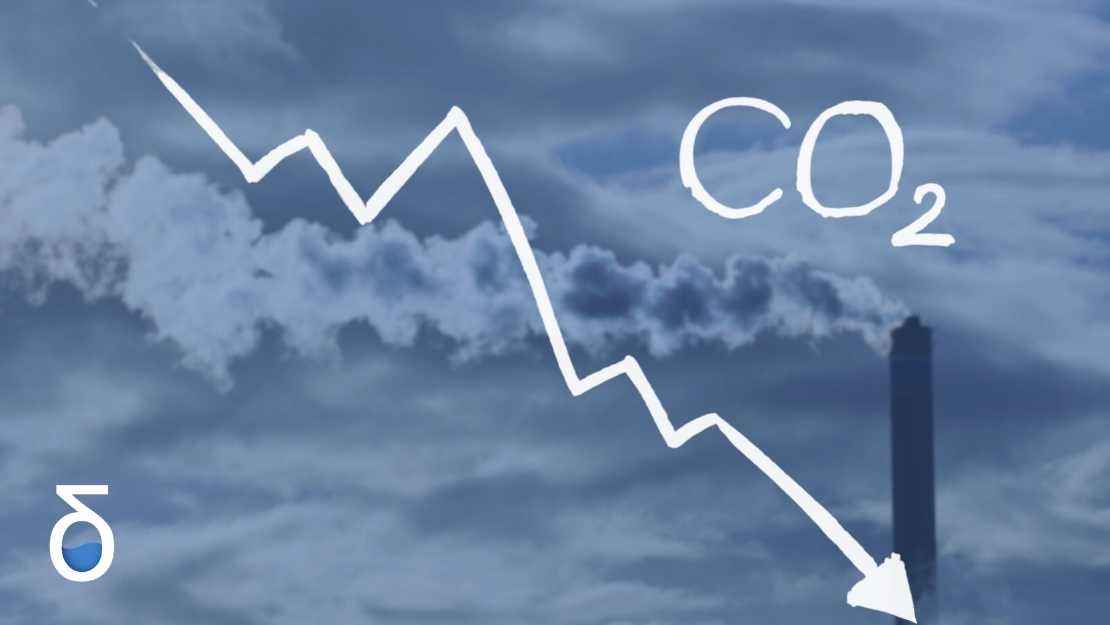CO2 emissions in the steelmaking process

In other posts, we presented a few initiatives to reduce CO2 emissions in integrated steel plants with the traditional BF-BOF route. Some of them are related to changes in the material blend, while others require investment in machinery. However, due to the nature of the processes, it is hard to achieve huge reductions. In order to reduce emissions more drastically, a complete change in the processes may be considered. The direct reduction appears to be a quite environmentally-friendly process when looking at the emissions. Let’s have a closer look at the figures, comparing the two technologies in the exact same conditions (same production and same raw materials).
Like the reduction process in a blast furnace (BF), the CO2 is the product of combustion and of iron reduction reactions in the direct reduction (DR) reactor. However, there are a few points that explain the difference of emission levels from one process to another.
The two reducing agents used in the reduction process are di-hydrogen (H2) and carbon monoxide (CO). Although there are always reduction reactions with both agents, the main reducing agent in the BF is CO. Even when the furnace is equipped with H2 injection, iron oxides will mainly react with CO to reduce, since CO is more abundant in the furnace. However, in the DR process, the gas injected for reduction in the reactor is composed of H2 (60%), CO (20%), CO2 (10%), CH4 (7%), and other gases (3%), like N2. With such a natural proportion of H2 and CO, the reduction reactions in the DR shaft produce more water in comparison with CO2.
An important difference between the two processes is related to the product itself. The hot metal, liquid metal without any oxides in it, is composed of iron (95%), carbon (4%), silicon (0.4%), and other elements (<0.5%). Sponge iron, product of the direct reduction process, results from the partial reduction of iron oxides and still contains other oxides, known as the gangue, that will eventually turn into slag in the subsequent process (EAF).
The enthalpy and the silicon content of hot metal bring thermal benefits in the converter, but this comes with a high environmental cost in the blast furnace where the energy is produced with carbon fuels, generating huge amounts of CO2. In a DR-EAF route, most of the energy is required at the electric arc furnace and can hence come from diverse sources. However, the whole CO2 balance should also account for the secondary process, including the treatment (that includes heating) of the process gas.
Another important aspect is the destination of the two off-gases. In both cases, the captured gases have energetic potential due to the presence of CO and H2 in their composition. The energy in the blast furnace gas (BFG) is used for thermal demands in other processes of the plant, mainly by burning the gas, which generates more CO2. However, the top gas of a DR plant is treated to be reused as a reductant gas in the reactor. This treatment can also involve partial removal of CO2 from the top gas. Many times, this volume is sold – to the beverage industry, for example – instead of released to the atmosphere.
A fair comparison of CO2 emissions from BF-BOF and DR-EAF plants is shown below. These figures have been simulated by a mathematical model that considers the exact same raw materials list and order book. It is clear that CO2 emissions for the DR-EAF route, of around 0.7 CO2 tonnes per slab tonne, are significantly lower than the ones in the BF-BOF route, around 1.8 CO2 tonnes per slab tonne.
Regardless of the steelmaking process, the industry is constantly aiming at improving its performance in a wide range of factors. It is clear that the environmental impact will be a main index over the next decades. Therefore, all innovations must be carefully evaluated to understand the trade-offs that they are introducing in the chain. And the best way to quantify those effects is by using mathematical models capable of representing each aspect of the plant.
Author: Emmanuel Marchal - Managing Partner at Cassotis Consulting
Co-author: Guilherme Martino